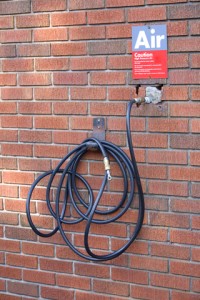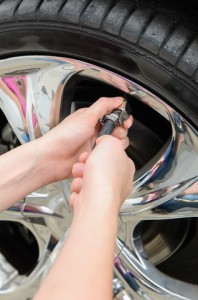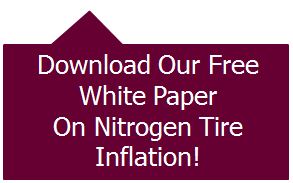 One of the biggest gripes about nitrogen tire inflation is that air is free, so why pay for something that you can get for free? However, it turns out that’s an outdated notion, as in some places, consumers have to pay anywhere from $.50 to $2.00 just to use the air compressor. Granted, in states like California, consumers can get air for free if they buy gas, but in most states, such a law doesn’t exist. This means, in most places, this gripe about nitrogen tire inflation is completely moot.
One of the biggest gripes about nitrogen tire inflation is that air is free, so why pay for something that you can get for free? However, it turns out that’s an outdated notion, as in some places, consumers have to pay anywhere from $.50 to $2.00 just to use the air compressor. Granted, in states like California, consumers can get air for free if they buy gas, but in most states, such a law doesn’t exist. This means, in most places, this gripe about nitrogen tire inflation is completely moot.
Since in most places you have to pay for both compressed air and nitrogen tire inflation, then consider it a comparison of product instead of a comparison on price. Much like a comparison of cheap shoes versus expensive shoes, or a cheap restaurant versus an expensive restaurant, you’re looking at much more than the dollars. You then have to consider if paying a little bit more for nitrogen tires provides more benefit and value than regular air.
But, Air is Already 78% Nitrogen
Yes, but that’s one of the biggest misunderstandings of nitrogen tires. It’s presumed that nitrogen is used because nitrogen is so special. However, the main reason why nitrogen is used is because the other 22% of air is so harmful for tires, primarily the oxygen and the water vapor. Both oxygen and water vapor are much more receptive to temperature changes, causing tire pressure to fluctuate. This means, if you don’t check your tire pressure when your tires are cool, such as when you pull into a gas station to fill up, you could be getting an inaccurate reading of your tire pressure. So, you’re filling up and you think you might be adding needed pressure, when in fact you could be overinflating them. On the other hand, if you do a reading and see that your tire is already overinflated, you could be releasing tire pressure from a tire that was already at proper tire pressure. Whether your tire is overinflated or underinflated, both conditions negatively impact fuel efficiency and tire life.
Checking Tire Pressure Regularly will Do the Same Thing
We certainly don’t recommend nitrogen tire inflation as a substitute for checking tire pressure regularly, but when you consider that 85% of people don’t know how to properly inflate their tires, what good will regular tire pressure checks do for most people (unless they get it done at an auto service station)? At least with nitrogen tires, proper tire pressure is maintained for a longer period time, and pressure checks can be done at regular maintenance checks with little worry. With nitrogen tires, consumers will have one less thing to worry about, which is a nice thing in our incredibly busy lives. Unless skeptics are going to start teaching people how to properly inflate their tires instead of complaining about how nitrogen tire inflation is a scam, then they aren’t solving for the fact that 44 million people in the United States are driving on at least one underinflated tire.
Nitrogen-Filled Tires are a Better Product
When it comes down to it, nitrogen tire inflation offers a much better product than a tire filled with compressed air. Sure, it costs more, but there are a lot of products that cost more and are much better than their cheaper counterparts. Nitrogen tire inflation provides tires that will maintain proper tire pressure for a longer period of time and will help those people who, for whatever reason, don’t check their tire pressure regularly or don’t know how to properly inflate their tires. By going to a professional or to an auto service shop that offers nitrogen tire inflation, you are sure to get someone who knows what they are doing and can provide you this better product correctly.
DU8MHR6BVP86
 This is a question that comes up a lot in the forums and on other blogs, and we’ve decided finally to answer it. Since nitrogen tires are the alternative to tires filled with air, is it okay to mix them? Would mixing them diminish the benefit of nitrogen, or not make any difference since air is still in the tires?
This is a question that comes up a lot in the forums and on other blogs, and we’ve decided finally to answer it. Since nitrogen tires are the alternative to tires filled with air, is it okay to mix them? Would mixing them diminish the benefit of nitrogen, or not make any difference since air is still in the tires?






